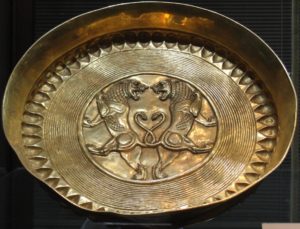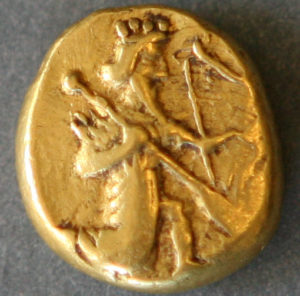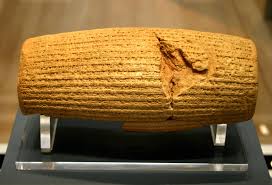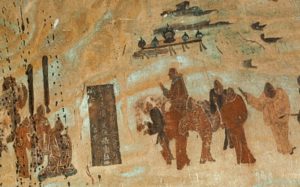Persian Empire Artifacts: The Persians and the Medes were distantly related to the Scythians, the Hittites, the Greeks, and the Romans, and they spoke a related language. Like the Scythians, the Medes and the Persians were nomadic people.

The conquest of Persia by Alexander the Great in the 4th century BC brought about a blending of Persian and Hellenistic styles, seen, for example, in the bronzes, pottery, and jewelry of the Parthians. The Sassanian dynasty (AD 224-642) was the richest period of artistic achievement, developing to the full a wide range of new and inherited styles and techniques.
Persian Empire Artifacts
Artifacts of the Persian empire includes Shahyad Monument that was the symbol of the country’s revival. The Shahyad Tower was a striking national monument and audio-visual theatre complex. Its name: Shah (king) and Yad (remembrance) were intended to remind coming generations of the achievements of modern Iran under the Pahlavi Dynasty.

Hossein Amanat was the young architect with a few months after completing his architectural studies at the University of Tehran.
Persepolis is near the small river Pulwar, which flows into the river Kur (Kyrus). The site includes a 125,000 square meter terrace, partly artificially constructed and partly cut out of a mountain, with its east side leaning on Kuh-e Rahmet André Godard,
Cyrus the Great Artifacts
The French archaeologist who excavated Persepolis in the early 1930s believed that Cyrus the Great chose the site of Persepolis, but that Darius the Great built the terrace and the great palaces, which were completed during the reign of his son, King Xerxes the Great. Further construction of the buildings on the terrace continued until the downfall of the Achaemenid dynasty.

The Darius’s foundation charter for the city tells us that it was Greek and Lydian stonemasons who carved the Susa columns. The model they worked from was created by Persian architects, who deliberately–and most probably by royal command–combined several styles to demonstrate the unification of the different parts of the empire.
Persian Artifacts Museum
Another artifact is a Cuneiform script, gold tablet discovered by German Architect Freidrich Krefter, Apadana Palace Persepolis, 1933. Inscribed in Old Persian, Elamite, and Babylonian, it identifies Darius I as the builder of Apadana.

The content of the code is the legal part of the text that used everyday language and was simplified, for the king wanted it to be understood by all. However, the legal decisions are all constructed in the same manner: a phrase sets out a problem of law or social order.